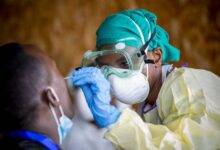In 1959, I was working at the Ghana Broadcasting Corporation as a Sub-Editor in the News Section. In those days, the GBC was teeming with talent – for instance, the future novelist, Ayi Kwei Armah, was a news reader; the archaeologist, the late Professor J R Anquandah, was a Technician in the Presentation Department; and the future BBC World Service Good Morning Africa/Morning Show presenter, the late Pete Myers, was in the Entertainment Section.
Pete Myers and I both owned Lambretta scooters, and we facilitated frequent get-togethers amongst the ambitious young staff of the GBC, during which we planned our futures and discussed the current goings-on in our newly independent country. We had great fun doing that.
One day, I arrived at the home of Pete Myers to discover that he was shaking from head to foot. He had bloodshot eyes (with a yellowish tinge) and a very high temperature. He was hardly coherent when he spoke.
I knew at once that he was suffering from malaria.
What to do? In my panic, I reasoned that he had to obtain immediate treatment. But what treatment?
I concluded that since Pete was a non-African, he must have used “white-man’s medicines” against malaria many times before, whilst he was living in Ghana: you know, drugs like Daraprim, Nivaquine, Chloroquine, and that sort of thing. If Pete had caught malaria in spite of the common availability of such prophylactics in Ghana, then if he was prescribed with them again, might he not perish?
The thought of possibly losing him made me unusually courageous. I remembered that whenever anyone from my large family at Asiakwa (my mother alone had nine children; there were also the children she had inherited from my father’s first marriage; as well as the usual relatives who constituted our “extended family”) got what we called huraƐ [our name for malaria] he or she was treated at home and not taken to the only neighbourhood hospital. [This was sited at Kyebi, and could only be reached over a bad road that might kill the patient before he/she arrived at the hospital!]
“Ah!” I thought. “None of us died as a result of the home medicine given to us. Why not try it on my friend?
So I collected a lot of neem tree leaves from the trees that grew luxuriantly around Pete’s house. I put the leaves in a pot and lit a fire under the pot.
I went into Pete’s wardrobe and found some balls of camphor, broke a piece off one, and added it to the boiling leaves.
After about ten minutes, I took the concoction off the fire, poured it into a bucket, and wrapped a large towel around the edges of the bucket.
Then I led Pete to the bucket, sat him round it and immersed his head into the top part of the towel.
He had no choice but to breathe the steam-cum-vapour that arose out of the bucket, deeply into his lungs!
I watched him and smiled to myself as he began to sweat profusely. After a while, I took the towel off his head and led him to his bed.
Pete slept deeply for over four hours. First, he stopped sweating. Then his breathing became easier. Finally, he woke up!
“Cameron, please bring me some water!” he called out weakly.
Ahah! He knew who I was! No possibility of delirium!
I took him the water.
He sat up.
He drank the water and sighed deeply.
Pete had regained normality! In less than eight hours!
I was overjoyed.
Now, I knew from Nature Studies in school that malaria could be cured by quinine, which was obtained from the bark of a tree called cinchona. But our Nature Studies book didn’t mention the neem tree. Why not? I dismissed the idea as one of the lunacies that related to knowledge, as acquired and practised by the white-man, and as known and used by us black people.
I mean: whenever we had a disease of the eye called anii [conjunctivitis] my father would go into the bush, collect the leaves of a plant called nunummerewa, mash them on a stone specially used for preparing herbal medicines, add a little water on to the leaves and put it in a clean piece of cloth, and drip the liquid carefully into our eyes, drop-by-drop. Our infected eyes would get healed in two days or less!
He also had medicines for chicken-pox, stomach-ache, yaws and mumps – all diseases that worried us children. As well as herbs for injuries sustained during play.
Knowing all this, I am thrilled to bits by the debate that’s going on with regard to the possibility of an “African cure” for Covid-19. But I am withholding an opinion on the efficacy or otherwise of using hydroxychloroquine and other medicines for the treatment of the disease.
My caution arises from two facts: we do not, as yet, know the full story of the origins of Covid-19. Was it developed by the Americans and sent to China during a military sports tournament between China and the US in 2019? We don’t know. Was it developed by China as a defence weapon against a possible US attack? We don’t know. Unfortunately, both countries possess such a Machiavellian attitude towards power that it would be foolish to adopt a firm opinion one way or the other.
In any case, there is only one way of attesting to the efficacy or otherwise of any cure for Covid-19, and that’s the time-tested method of observing, arriving at conclusions from observation and TESTING the conclusions against what Nature offers.
This is how Wikipedia outlines the methodology:
QUOTE: Define a question; Gather information and resources (observe);
Form an explanatory hypothesis; Test the hypothesis by performing an experiment and collecting data in a reproducible manner; Analyse the data; Interpret the data and draw conclusions that serve as a starting point for new hypothesis; Publish the results; Retest (frequently done by other scientists. UNQUOTE
In the current circumstances, therefore, creating a credible cure for Covid-19 will consist of TESTING the proposed cure on humans, over a requisite period, before approving it for general human use. Side-effects of the cure (if any) must be studied; their causes established and cures found for them.
Finally, the results must be “peer-reviewed” (that is, no single research institution or pharmaceutical concern should be allowed to claim that its conclusions are more or less “omniscient”.)
That is a tall order and it puts countries like Madagascar at a disadvantage. Since Covid-19 is so new, how do they know that their cure for it is indeed effective? If challenged [by say, W.H.O.], do they have the resources to put their cure through prolonged SCIENTIFIC TESTS? On the other hand, should their lack of resources necessarily rule out the possibility that although they are small and their efforts under-estimated, they can achieve results that might confound the efforts of certain countries with abundant resources, whose leaders want to cure Covid-19 with bleach?
The jury is out on that one!
BY CAMERON DUODU





